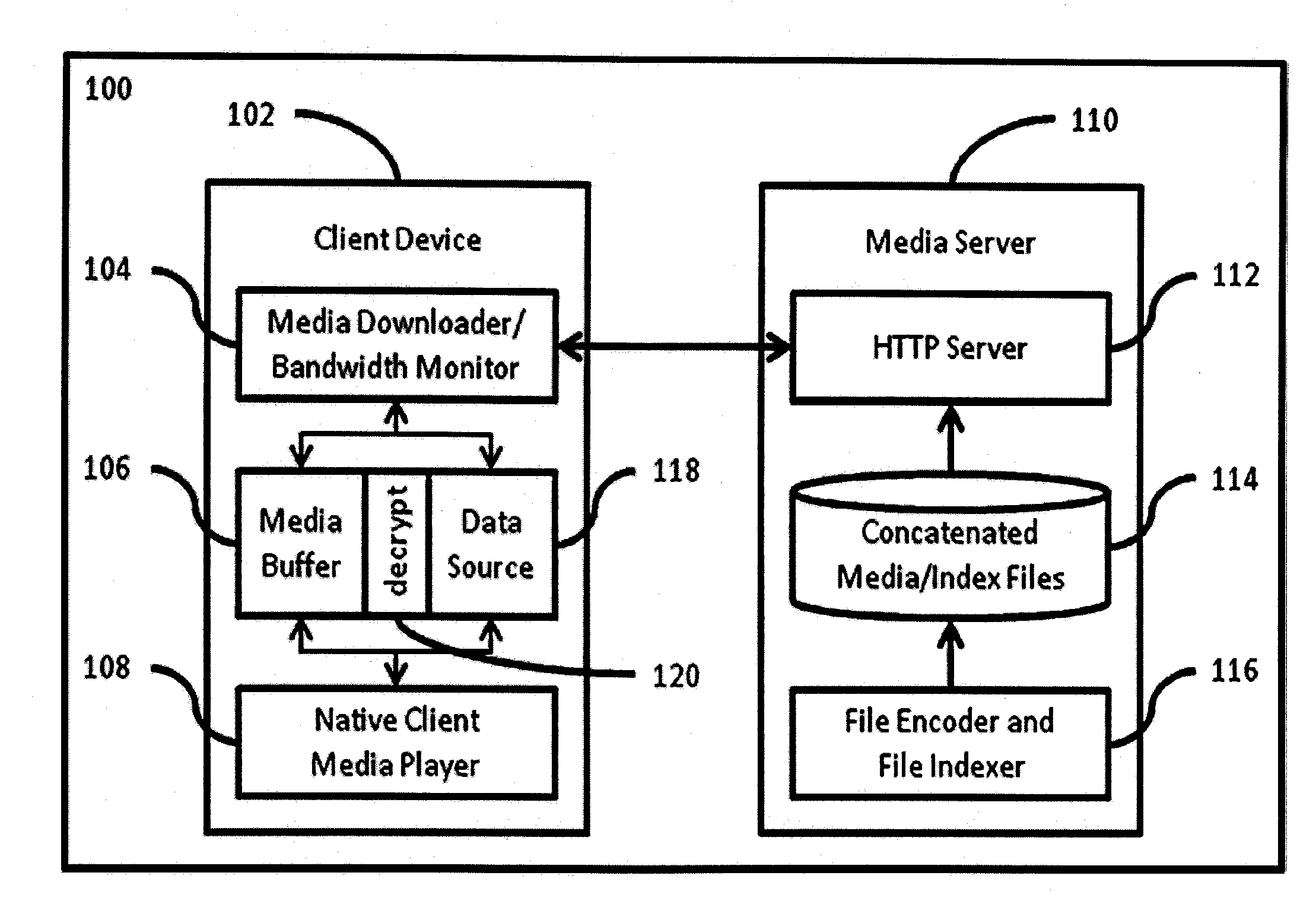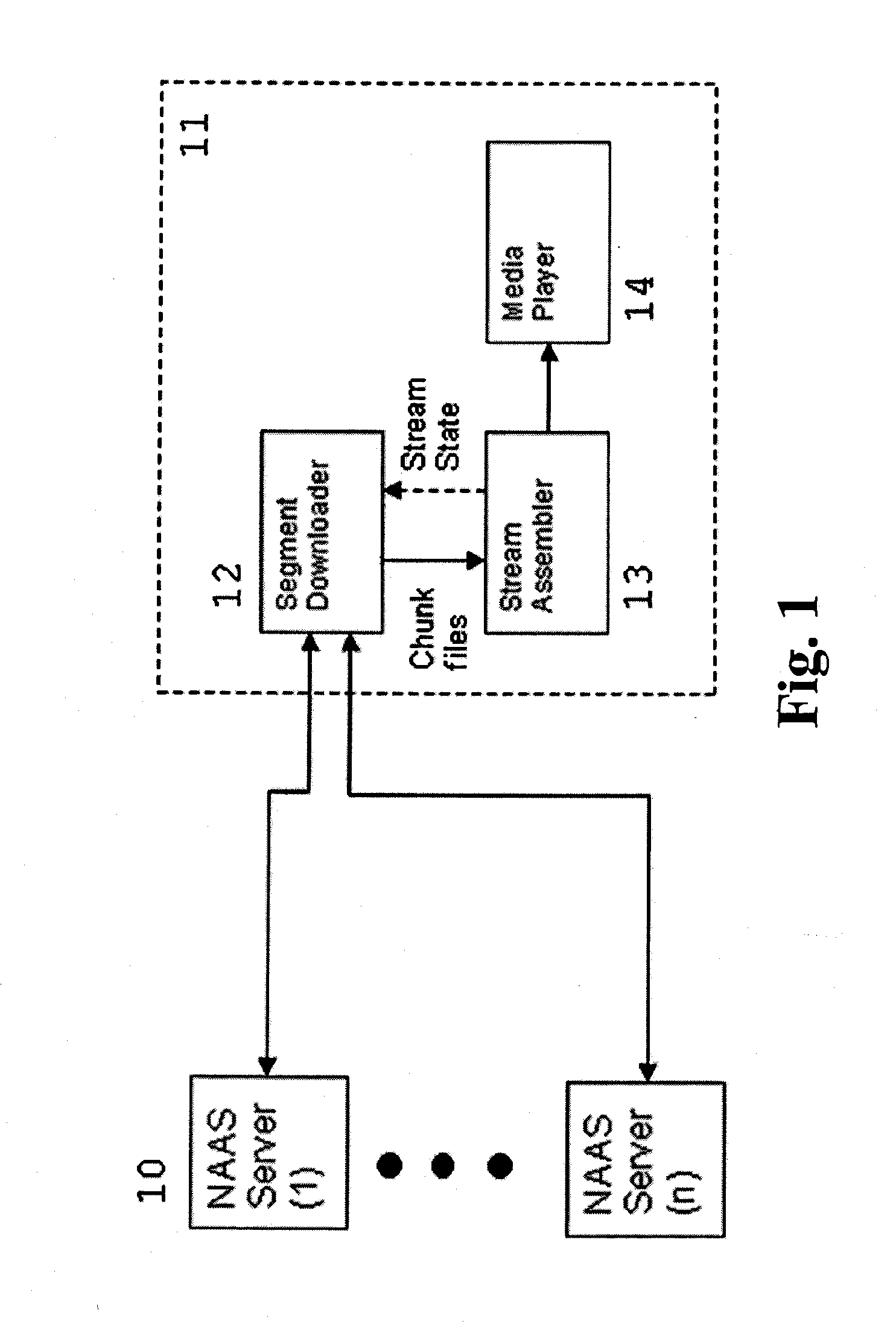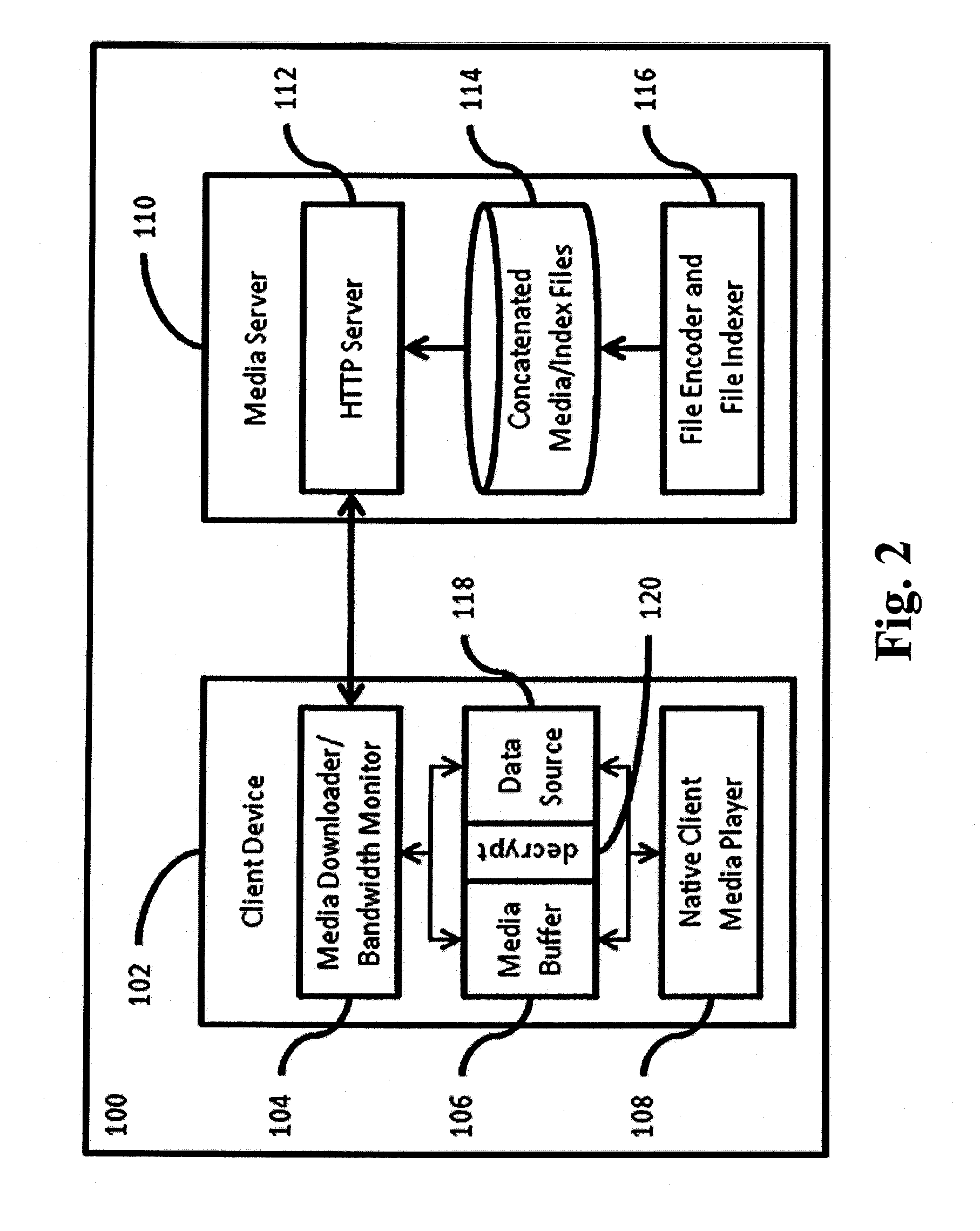[0009]The disclosed technique may employ a single concatenated file for managing a plurality of encodings for a given piece of source media. In one embodiment,
video media is transcoded into a plurality of different
bit rate encodings. The plurality of encodings are concatenated into a single file. The concatenated file is concatenated in a manner that allows for all encodings to be played sequentially and continuously. Encoding
concatenation is
file format specific but those methods should be well known to anyone skilled in the art. Concatenated files are created for a plurality of file formats, to support a plurality of client devices. In another embodiment, the concatenated files may contain non-video data which has been compressed and encrypted using different encoding methods to produce a plurality of encodings. The different compression and
encryption methods may require different levels of complexity and different amounts of client resources to reconstruct. Different compression and
encryption schemes provide different levels of quality (i.e. higher or lower compression and higher or lower security); they also have different types of framing and format organization, the details of which should be known to those skilled in the art.
[0010]In one embodiment, the concatenated files contain padding between the individual component encodings. In one embodiment, video files are padded out to integer time boundaries. The padding serves a
dual purpose. First, it provides a buffer for stopping the media renderer before the next encoding begins. Second, it simplifies time-based offset calculations. In another embodiment, video files are padded out with interstitial advertisements. Interstitial advertisements provide the same benefits as blank padding, but also include the flexibility to incorporate different advertising revenue models in
video delivery. In another embodiment compressed and / or encrypted files are padded out to round numbered
byte boundaries. This can help simplify
byte-based offset calculations. It also can provide a level of size
obfuscation, for security purposes.
[0012]In one embodiment, a rate map index file is used. The rate map index file contains a plurality of entries, each entry containing an index into the concatenated file. Each index contains a plurality of concatenated file
byte offsets which are offsets into the concatenated file. Each entry contains a concatenated file byte offset for each encoding in the concatenated file, such that each byte offset maps a position, in the current encoding, to the corresponding position in another encoding within the concatenated file. The offsets may be tuned to different
granularity. In one embodiment the rate map indices map out only the start of the encodings. In another embodiment, the rate map indices map out individual frames of a
video encoding. In another embodiment, the rate map indices map out groups of frames, beginning with key frames, for a
video encoding. In another embodiment, the rate map indices map out the different compression or encryption blocks of a
data encoding. The rate map indices are all of fixed size, so that the rate map indices themselves may be easily indexed by a rate map index file byte offset which is an offset into the rate map index file. For example, the index for a given frame F of a given encoding E can be found in the rate map index file at byte (((E*N)+F)*I), where N is the number of frames in each encoding, and I is the size of each index. The number of frames N is preferably consistent for all encodings of a given source video, though may differ from one source video to another.
[0013]In one embodiment, stitched media files are generated which may be split into a plurality of discrete particles. The particles are used to facilitate dynamic ad rotation. Three particles are used: a header particle, a feature particle, and an ad particle. Header and ad particle pairs are generated such that they may be used interchangeably with a given feature particle. A stitched media file is first generated by stitching feature content to ad content. In one embodiment, the feature content is a single video clip. In another embodiment the feature content is a
concatenation of a plurality of video clips. In one embodiment, each video clip is for a single
bit rate encoding. In another embodiment, each video clip is a
concatenation of a plurality of different bit rate encodings, for the same clip. In one embodiment, the ad content is a single ad clip. In another embodiment the ad content is a concatenation of a plurality of ad clips. In one embodiment, each ad clip is for a single bit rate encoding. In another embodiment, each ad clip is a concatenation of a plurality of different bit rate encodings, for the same clip. The concatenated clips are concatenated in a manner that allows for all encodings to be played sequentially and continuously. Encoding concatenation is
file format specific but those methods should be well known to anyone skilled in the art. In one embodiment the particles may be encrypted. The different compression and encryption methods may require different levels of complexity and different amounts of client resources to reconstruct. Different compression and encryption schemes provide different levels of quality (i.e. higher or lower compression and higher or lower security); they also have different types of framing and format organization, the details of which should be known to those skilled in the art.
 Login to View More
Login to View More  Login to View More
Login to View More 


